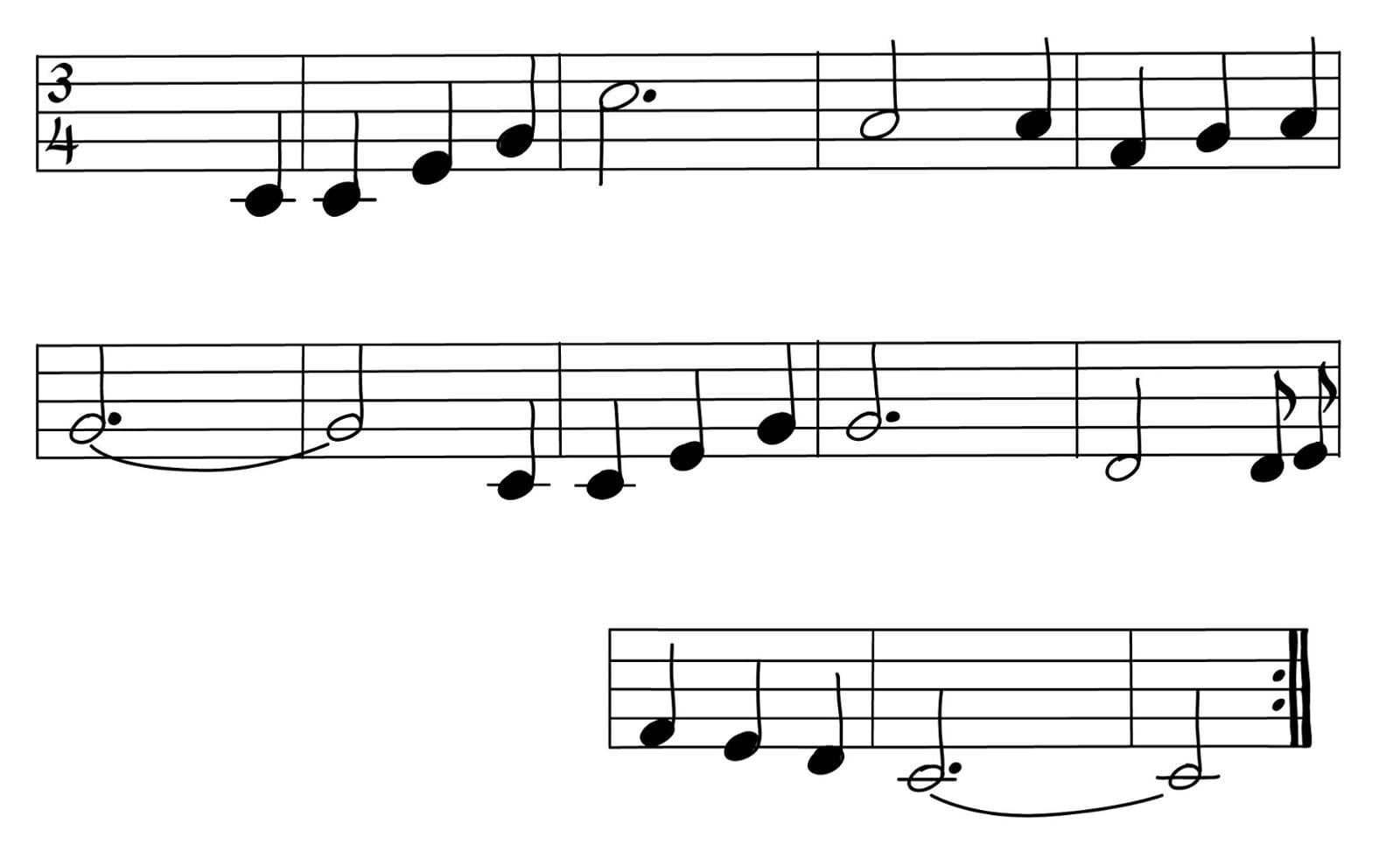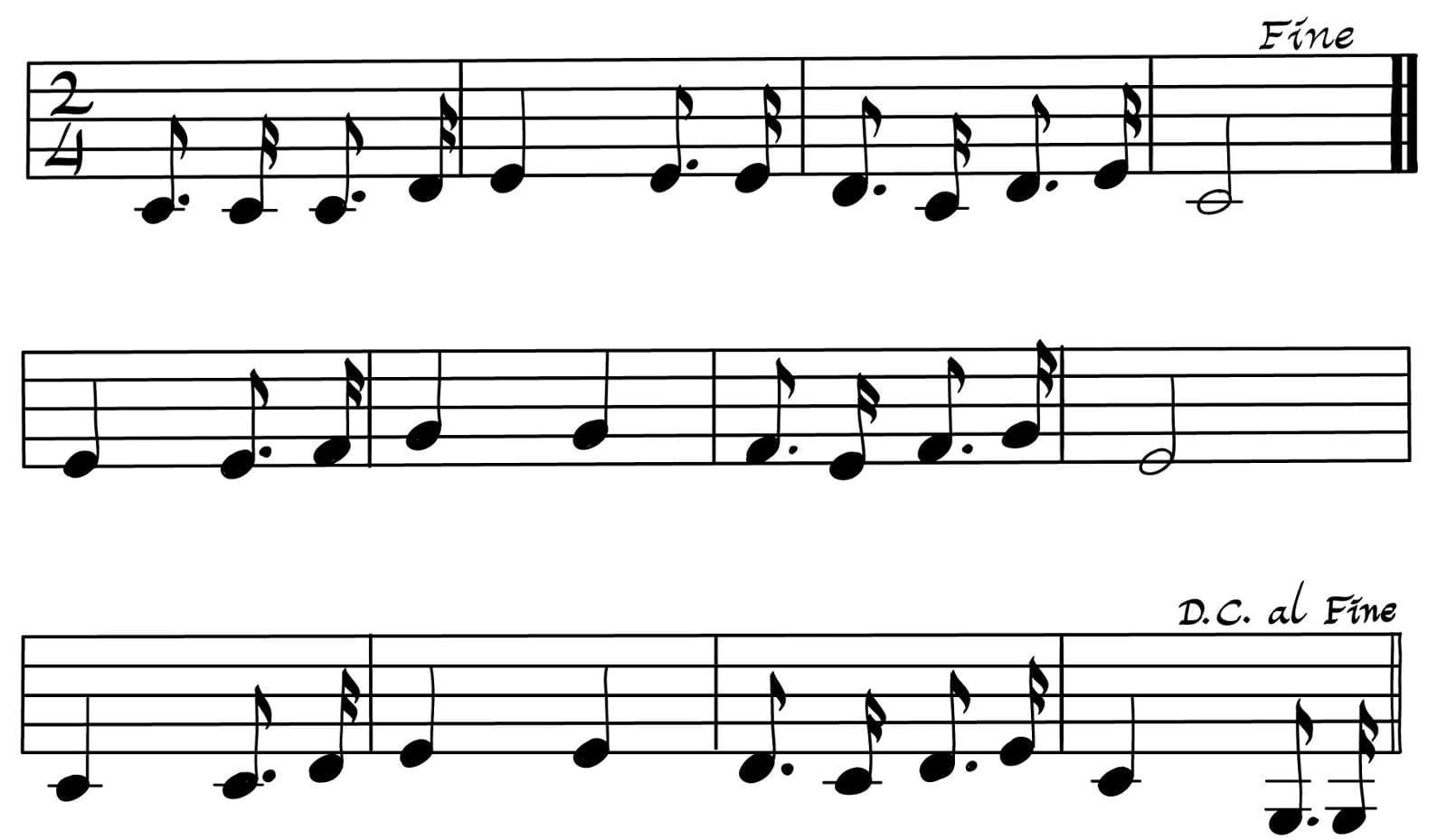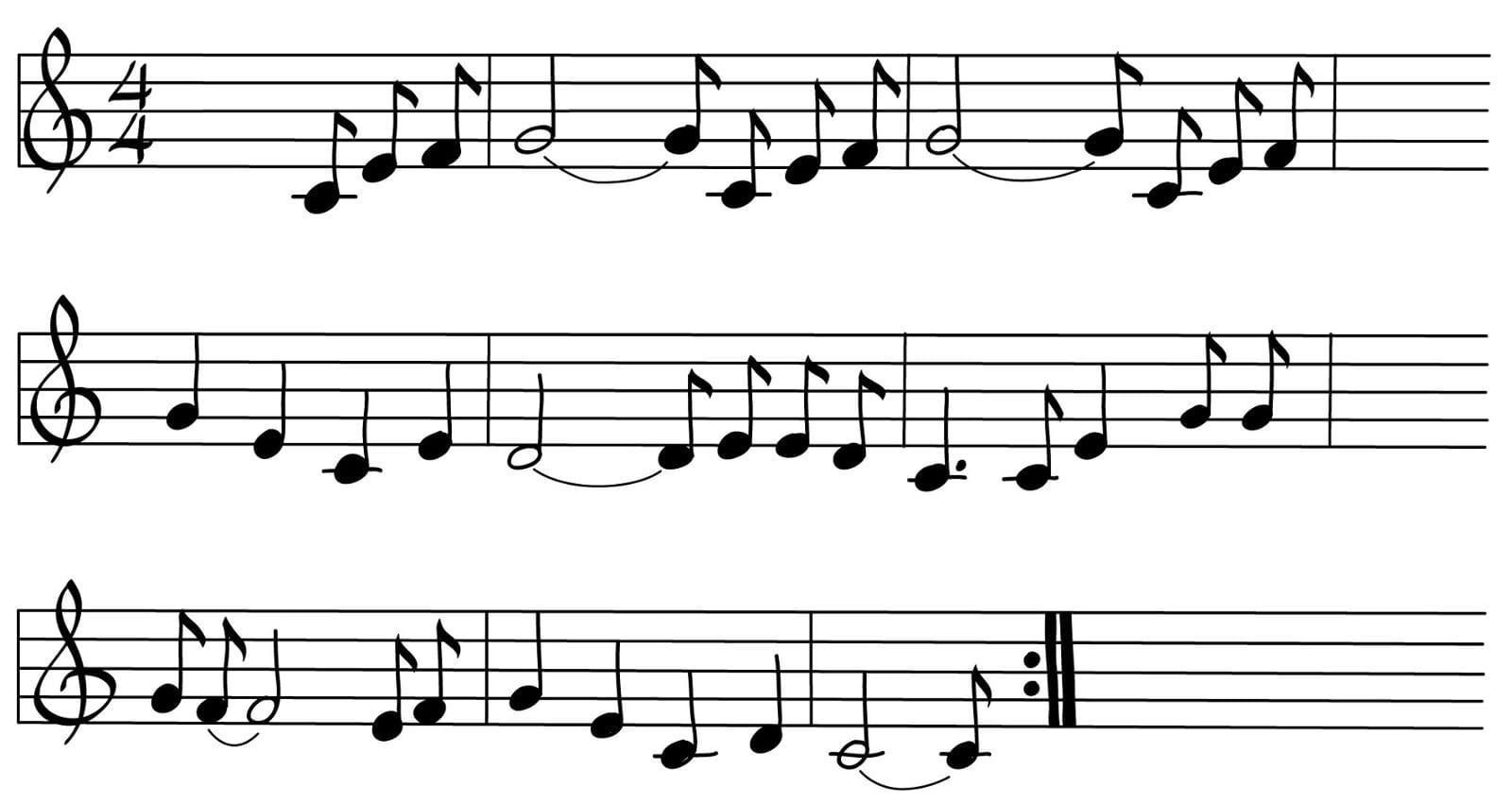READING MUSIC 3
By Mary Jane Gormley
Note: this is the third in a series of four educational articles on the basics of reading music, intervals and notation. These building blocks were originally presented by Mary Jane Gormley as a workshop for harmonica players, but they are a valuable guide for anyone wanting to learn to read music. The print-ready PDF of this article can be downloaded here.
This is another piece in 3/4 time, with several dotted half notes that fill single measures. Curved lines connect some notes; if the notes are the same, the curve is a tie, and the time of the second note is added to the first without a break. The tied notes on the second line add up to five continuous beats in all. (If the two notes are not the same, the curved line means a smooth transition from one to the other.)
This piece starts not on the first beat of a measure, but on the third. The ending of a piece with an off-the-beat start will always make that start add up to a full measure, so here the final measure is a half note (tied to the dotted half of the previous measure); the third-beat start of the first measure evens it up.
A count here begins (one two) start. Count the three-four time and clap the notes. Intervals: same, third-up, third-up . . . . Start on blow four.
We have a new time signature—2/4 time! Two counts per measure. And a whole wild forest of dotted notes and flagged stems. Hang on!
A dotted eighth note (one flag) plus a sixteenth note (two flags) adds up to one beat—it’s the same three-one split as the dotted quarter note plus an eighth we met earlier, but in a shorter time. That pair pops up over and over again in this piece, intermixed with the occasional unadorned quarter note, for one count each time. The dotted eighth plus its sixteenth gives a long-short long-short sound over and over again for a galloping effect. Because a whole measure only has two beats, a half note by itself fills it up. Can you count and clap out this timing? Count out loud one-two, clap the notes.
We meet a new kind of partial repeat. Above the end of the first line it says “Fine,” and of course it is just fine, but it’s Italian, fee nay, meaning “end” (as in final). Above the end of the third line there are some new directions: “D.C. al Fine,” which means Dal Capo, “from the head” (beginning), to the Fine—end. At that point, go back to the beginning and play just as far as the Fine—which is where the heavy double bar line is.
The intervals are same, same, second-up, . . . identify them. Then play it, starting on blow four. If you can manage the timing and the intervals here, you’re doing great!
This is in four/four time; we meet the G clef at the beginning of all the lines. The four/ four time signature is shown only on the first line, right after the clef.
We have a whole new rhythm: a five-three split. The music begins three eighth notes before the first bar line, and we need eighth notes throughout. It starts on the three-and in a count of four (one-and two-and three-and four-and), with the first downbeat in the next measure. If the opening measure is not a full count, as we know, the final measure will fill it up—as it does.
Many measures start with a half note tied to an eighth note (not the same as a dotted half note, which would be a count of three; this is two and a half), followed by three eighth notes, which fill up the measure. The final measure is a half note tied to an eighth note, which adds up to a full measure when another verse, starting with the three eighth notes of the opening measure, follows it.
Count the one-two-three-four out loud (with the ands if you wish) and clap the notes. Name the intervals, third-up, second-up . . . ; start on blow four.
We meet a somewhat simpler way to flag stems—just a short tilted bar attached to the end.
♪MJNG
The basics of reading music, intervals and notation, are presented here in a series of four articles written by Mary Jane Gormley. These building blocks were originally presented as a workshop for harmonica players, but are a valuable guide for anyone wanting to learn to read music.
They were later summarized into a series of four short articles intended for print. The articles can be downloaded as PDFs in their original format, or the contents found on the pages of this website.
They were later summarized into a series of four short articles intended for print. The articles can be downloaded as PDFs in their original format, or the contents found on the pages of this website.



